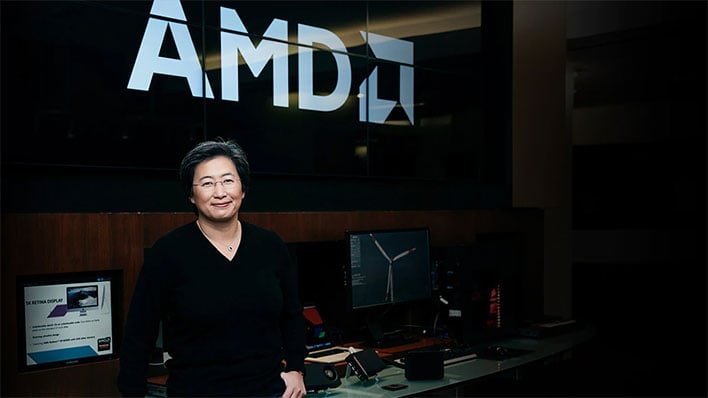AMD Market Cap Rises To Put Intel In The Rearview Mirror For The First Time Ever

AMD this week completed its $35 billion takeover of Xilinx, a powerhouse in the field programmable gate array (FPGA) semiconductor space. In doing so, AMD not only expanded its reach into more market segments, it also propelled its market cap to a new heights and, for the first time ever, put Intel's market cap in the rearview mirror.
We're being a bit cheeky with that description. For anyone who might have missed it, Intel CEO Pat Gelsinger recently posted a video on LinkedIn reflecting on the past year, and in it he said the arrival of Alder Lake put "AMD in the rearview mirror" for good."
"Alder Lake—all of a sudden...Boom! We are back in the game. AMD in the rearview mirror in clients and never again will they be in the windshield. We are just leading the market," Gelsinger said.
There are a multitude of ways to compare AMD and Intel in the CPU space, from single-threaded and overall performance metrics, to market penetration and market cap. Looking at the latest CPU market share figures, Intel is certainly way out ahead of AMD in every category (desktop, mobile, server, and overall x86) and is a much bigger company. That said, AMD's market share is the highest it's ever been.
Market capitalization is something else entirely. It is the total dollar value of a company's outstanding shares, and is one way to roughly gauge a company's worth (it's more nuanced than that). Looking at AMD's situation, according to Tom's Hardware, buying Xilinx effectively converts 248.28 million Xilinx shares into 428 million new AMD shares. That process isn't finished, but the deal itself is done. Added to AMD's existing 1.2 billion share, the buyout bumps the company's market cap to $197.75 billion. Intel's market cap sits at $197.2 billion at the moment (Intel announced it is acquiring Tower Semiconductor, but that deal is expected to take 12 months to close).
AMD is also ahead of Qualcomm ($194.97 billion), though not NVIDIA, which has a market cap of $662.38 billion even after calling off the Arm deal.
Make of all these numbers what you will, but suffice to say, AMD is in a very good place. Certainly much better than when it was on the verge of bankruptcy when Dr. Lisa Su had just become the company's CEO. She's done a tremendous job turning the company's fortunes around, culminating (so far) with AMD's highest market cap to date.

